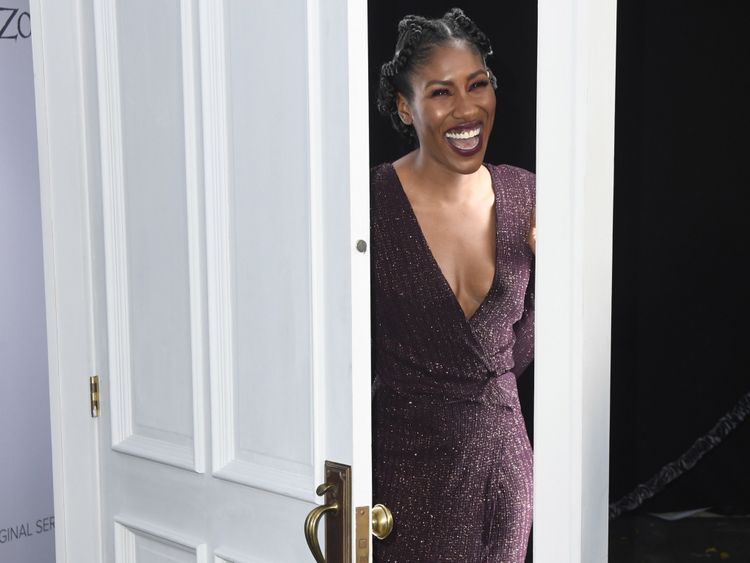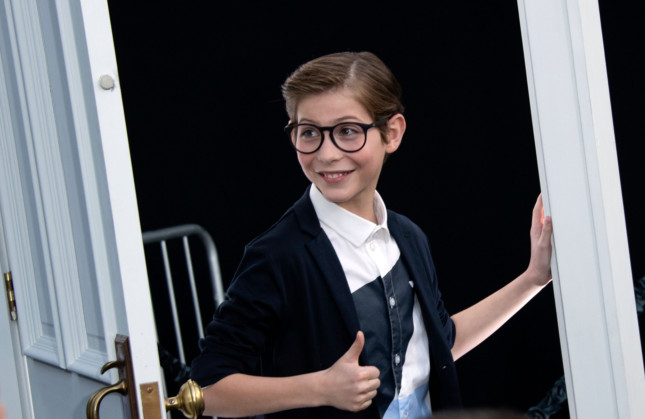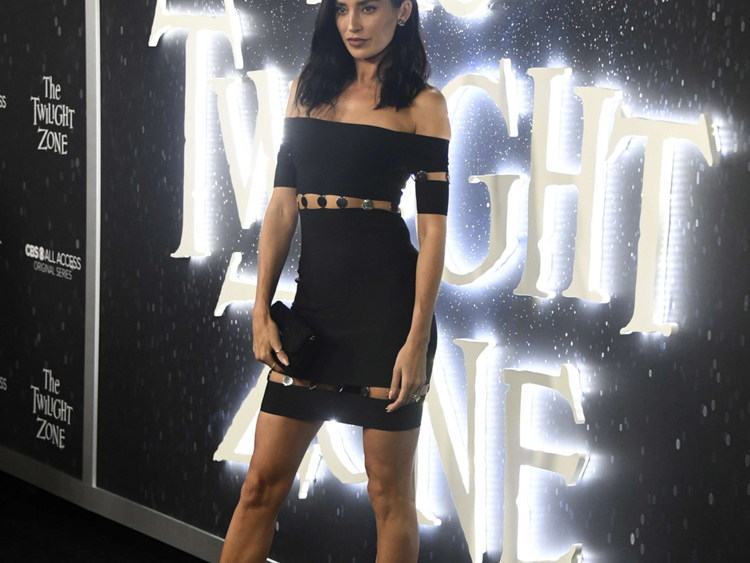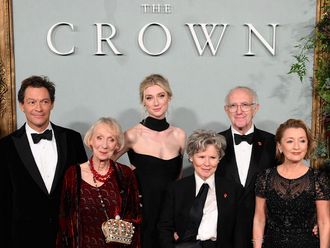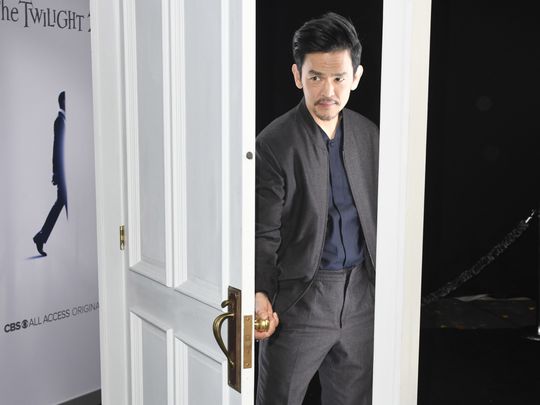
Sixty years after ‘The Twilight Zone’ was first broadcast, its influence on popular culture reaches far beyond the Fifth Dimension. Just imagine a parallel universe where the spooky anthology series and its creator Rod Serling never existed. There would be no ‘Star Trek’, no ‘Twin Peaks’, no ‘Black Mirror’, no twist endings, no breaking of the fourth wall, and no one whistling the “do-do-do-do, do-do-do-do” theme tune whenever something strange happens.
Originally broadcast from 1959 to 1964, ‘The Twilight Zone’ told one-off tales of mystery, monsters and men from space, usually with a rug-pull twist in the final seconds — “They were dead all along! It was all a dream! The humans are the real monsters!” — a trick borrowed from other anthologies such as Alfred Hitchcock Presents.
Serling himself played its suit-wearing, chain-smoking host, who wandered into the stories to introduce the week’s mystery and warn viewers they were about to enter The Twilight Zone.
Now it is set to return for 10 new episodes on streaming service CBS All Access from April 1, with ‘Get Out’ writer-director Jordan Peele stepping into Serling’s role as ‘The Narrator’, producer and co-writer.
What gave the original show its power was its sharp-minded political allegory and social conscience, tapping into the anxieties of the day through probing moral quandaries. Is it the anxieties of our own politically and socially turbulent era that make 2019 the right time to re-enter The Twilight Zone?
“I think that you could do ‘The Twilight Zone’ in any era,” says Glen Morgan, a writer and executive producer on the series. “You always think, ‘This era is really crazy,’ but things are always crazy.”
The team of producers, which includes Morgan, Peele, ‘BlacKkKlansman’ producer Win Rosenfeld and Carol Serling, the wife of Rod, who died in 1975 at the age of 50, have vowed to create stories for the 21st century using Serling’s tools — “mischief, allegory, paranoia”. They are also bringing back the original series’ iconic, unnerving theme tune.
“The original show has really been our guide,” says Morgan. “The great thing that Serling did was to [present] moral problems — if you were in that situation, what character flaws do you have that the cosmos would come down and challenge you on?”
The rebooted series promises to delve into such modern-day issues as celebrity, technology, race and terrorism. There’s also a modern tailspin on the original series’ most iconic episodes, such as ‘Nightmare at 20,000 Feet’ — about a gremlin that torments William Shatner’s aeroplane passenger from out on the wing — which gets an upgrade-cum-homage in ‘Nightmare at 30,000 Feet’, guest-starring ‘Big Little Lies’ actor Adam Scott.
Other guest names on board for individual episodes include Seth Rogen, Chris O’Dowd and Jacob Tremblay, the child star of ‘Room’.
But Peele remains the face of the show. He is horror’s man of the moment, the director of 2017’s Oscar-winning ‘Get Out’, the well-reviewed ‘Us’, which is in cinemas now, and a remake of ‘Candyman’ due to be released next year. After two previous mediocre ‘Twilight Zone’ reboots — first from 1985 to 1989 and again in 2002, both sorely missing Serling’s presence — Morgan believes Peele will finally get it right.
“Jordan has a vast knowledge of the genre,” he says. “His films are showing how to incorporate a social message into horror, the way ‘Rosemary’s Baby’ and ‘The Exorcist’ did. That’s why he’s the guy to do it.”
Serling himself confessed that he was “traumatised” into writing by his experiences in the Second World War. He had been a paratrooper in the 11th Airborne Division and fought in the bloody Battle of Leyte. He returned to the US in 1946 but he was left with both physical and mental scars: a shrapnel-injured knee that sometimes buckled beneath him and flashbacks to the battlefield.
“He would say that he dreamt the enemy was coming at him,” says his daughter Anne, now 63, who wrote the memoir ‘As I Knew Him: My Dad, Rod Serling’. “It was something he had to process his whole life.”
Serling became a scriptwriter, firstly for radio and then TV. But he became frustrated with executives who meddled with his stories, terrified that his morally progressive scripts would upset conservative viewers and advertisers. ‘The Twilight Zone’ concept allowed Serling to slip in his social and political commentaries via the Fifth Dimension.
‘The Twilight Zone’ premiered on October 2 1959. The series wasn’t considered a ratings success at first, but connected strongly with a teenage audience. Over five seasons it broadcast 156 episodes, all in black and white.
The show had recurring themes: unlikely monsters tormenting lone protagonists (a gremlin, talking doll, and even a fruit machine); microcosms of society on the brink of hysteria (white-picket suburbanites who fear there is an alien among them); careful-what-you-wish-for parables (a bookworm who prefers literature to people is the only man to survive the apocalypse, but breaks his glasses before he can enjoy a lifetime of uninterrupted reading); and blackly comic ironies (the humans in ‘To Serve Man’ who realise the manifesto from a race of seemingly friendly aliens isn’t a manifesto at all, but a cookbook).
“It was primarily dealing with the human condition,” says Anne. “These issues that he talked about way back when are still sadly relevant and prevalent today. I can tell you unequivocally that he would be deeply, deeply saddened by what’s happening [in America] now — and then he would be apoplectic.”
After ‘The Twilight Zone’ was cancelled in 1964, Serling went on to host and write for the not-entirely-dissimilar horror anthology ‘Night Gallery’. He died 10 years later following a series of heart attacks. “I don’t know that he was aware of the impact he had,” says Anne. “He would be stunned that people are still talking about his work — stunned and humbled.”
Morgan was overwhelmed the first time he wrote down the classic “you are now entering another dimension” opening spiel.
“If you’re a scriptwriter, it’s like being an American baseball player and pulling on Yankee pinstripes,” he says. “The first time I wrote it I had to walk around my backyard and I was emotional. I know Jordan felt the same way. It’s sacred ground — ‘The Twilight Zone’ is one of the great pieces of art of the 20th century.”



